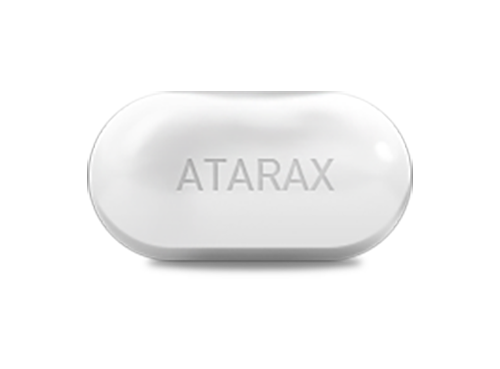Buspar: Comprehensive Product Description
Drug Uses
Buspar is a non-benzodiazepine anxiolytic medication with mild antidepressant activity, widely prescribed for the treatment of generalized anxiety disorder (GAD) and excessive nervous tension. Unlike benzodiazepines, Buspar does not produce sedative, muscle relaxant, hypnotic, or antiepileptic effects, making it a safer option for long-term anxiety management. It is particularly beneficial for adults, elderly patients, and adolescents over 18 who need relief from persistent anxiety symptoms without the risk of dependence or withdrawal syndrome. The anxiolytic effects of Buspar develop gradually, typically becoming noticeable within one to two weeks of continuous use, with peak therapeutic benefits achieved after one month of regular administration. The dosage is carefully adjusted based on the patient’s response and the severity of the anxiety disorder, ensuring a personalized treatment plan for optimal results.
Dosage Recommendations
The recommended starting dose of Buspar is 15 mg per day, divided into three doses of 5 mg each. If necessary, the daily dosage can be gradually increased to 45 mg, depending on the patient’s response. For adult patients, the maximum daily dose should not exceed 60 mg, while elderly patients are advised to stay within a maximum dose of 30 mg per day to minimize the risk of side effects. Proper dosing and consistency are essential for achieving the full anxiolytic benefits of Buspar.
Missed Dose
Since Buspar requires regular intake for maximum effectiveness, missing a dose may temporarily reduce its anxiolytic benefits. If a dose is missed, take it as soon as remembered. However, if it is already time for the next scheduled dose, the missed dose should be skipped to avoid double dosing. Consistent use at the prescribed times enhances its effectiveness and minimizes fluctuations in symptom control.
More Information
Studies indicate that food can enhance the absorption of Buspar, potentially improving its therapeutic effect. However, grapefruit and grapefruit juice should be avoided during treatment, as they can significantly increase the drug’s concentration in the bloodstream, leading to a higher risk of side effects. Unlike some other anxiolytics, Buspar should not be taken on an as-needed basis; its effectiveness relies on regular and scheduled intake. Patients are encouraged to adhere strictly to their prescribed regimen to achieve steady and sustained relief from anxiety symptoms.
Storage
Buspar should be stored at a controlled room temperature between 15°C and 30°C in its original container to protect it from excessive heat, moisture, and direct light. Keeping the medication properly stored ensures its potency and effectiveness throughout the treatment period.
Buspar Safety Information
Warnings and Precautions
Patients with renal or hepatic impairment should take Buspar with caution, as their condition may require dosage adjustments and extended intervals between doses. Combining Buspar with other medications that depress the central nervous system (CNS), including certain sedatives and anxiolytics, should be done carefully to prevent excessive drowsiness or adverse interactions. Co-administration with erythromycin, itraconazole, or nefazodone may require a reduction in Buspar dosage to avoid intensified side effects.
Clinical research has shown that the simultaneous use of monoamine oxidase inhibitors (MAOIs) and Buspar can result in dangerously high blood pressure and hypertensive crises. For this reason, patients should avoid taking Buspar while on MAOIs or within 14 days of discontinuing their use. Additionally, due to insufficient data on its safety during pregnancy and breastfeeding, Buspar is not recommended for pregnant women or nursing mothers unless prescribed by a physician after assessing potential risks and benefits.
Throughout the treatment period, alcohol consumption should be avoided, as alcohol can alter the drug’s effects and potentially enhance side effects such as dizziness or drowsiness.
Disclaimer
The information provided in this review of Buspar is for educational purposes only and should not replace professional medical consultation. It is essential to seek advice from a licensed healthcare provider before starting, adjusting, or discontinuing treatment. The online pharmacy is not responsible for any complications or adverse effects arising from improper use of this medication.
Buspar Side Effects
Common Side Effects
Buspar is generally well-tolerated, with most side effects being mild and temporary. Commonly reported side effects include nausea, headache, mild dizziness, fatigue, and drowsiness, which typically appear at the beginning of treatment and subside as the body adjusts to the medication. Less than 4% of patients discontinue use due to central nervous system-related effects, such as nervousness, lightheadedness, or minor sleep disturbances.
Rare but Potential Side Effects
In rare cases, some patients may experience dry mouth, numbness, mood changes including mild depression, tachycardia, or allergic skin reactions such as rash or itching. While these effects are uncommon, any persistent or severe reactions should be reported to a healthcare professional to determine whether continued use of Buspar is appropriate.
Conclusion
Buspar is a highly effective and well-tolerated treatment for generalized anxiety disorder, offering a safer alternative to traditional benzodiazepines without the risk of dependence or withdrawal. With its ability to provide long-term relief from anxiety symptoms while preserving cognitive function and daily alertness, it is a preferred choice for patients seeking a non-sedating anxiolytic. By following the prescribed regimen and medical guidance, patients can achieve consistent anxiety control, improved mental clarity, and better overall well-being.








Reviews
There are no reviews yet.